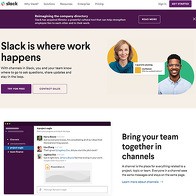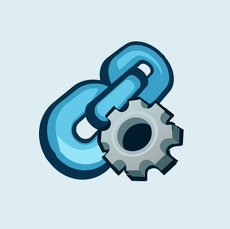Show 11+ sites like Asana:
Asana
asana.com
Don’t tell me you haven’t heard of Asana before. These guys pioneered team management long before companies like Google were figuring out the formula. Sure, G Suite is 5 years older than Asana, I get that. But, when Asana first entered the scene, they were winning bids left and right. Companies were flocking to them and it wasn’t just because they were affordable. There was something to their formula and the number of tools they offered that made them irresistible. They haven’t lost their touch either.
I’ve said in the past that “sites like Asana” bother me and I stand by that. Sure, I’m not a huge Asana fan. But, I have particular reasons for that. Asana isn’t the right tool for me, but it could be exactly what you are looking for. Suffice it to say that Asana isn’t for everyone.
Not for Everyone
Or rather, it wasn’t for everyone when it first came out. You see, Asana used to pride themselves on their complexity. They had enterprise-level tools that helped large scale teams manage all facets of a huge operation. This was more than a simple bulletin board. They had pages among pages of features. I distinctly remember the first time I tried Asana – it was a bit of a nightmare. I just couldn’t find my way around the damn thing. I needed to undergo training in order to use it.
As far as I’m concerned, any tool that requires a goddamn tutorial for you to use isn’t worth it, especially if that tool is supposed to make your workflow easier. Maybe I’m nitpicking, but I didn’t have this problem with, say, Trello. Then again, Asana is several tiers above Trello in the amount of work it gets done for you, so, like I said, it’s not for everyone. It’s large scale, aimed at huge companies with a lot of active projects. So, it could be perfect for your little porn empire.
It’s Streamlined, Now
Asana hasn’t changed too much since the original launch. It’s still one of the most thorough team management solutions out there. However, they’ve streamlined the part I hated the most about the original Asana – the interface. I honestly don't know how much they’ve changed, as the site's general vibe is similar. But, I can tell for sure that it’s more accessible now. You can clearly understand where you need to go to figure out what you’re supposed to do next. It’s still a bit difficult to find your way as an admin or employer, but it’s an absolute breeze for the workers.
They’ve taken many pages out of the modern social media web design book. Notifications stick out, everything is cross-linked and you don’t get bounced around irrelevant pages when you’re just trying to find your way. There’s also an added intuition to the design of basic elements like the calendar. Forget standard calendars. Asana’s calendar is where it’s at. You get this really intuitive breakdown of tasks and workflow along with images of the associated workers. So, if you’ve got a bunch of projects lined up, you can see them all under calendar view along with their length and workflow. You can tell which tasks require other tasks to be completed first and so on. It’s ridiculously intuitive.
Proper Holistic Automation
When I say holistic automation, I’m talking about this futuristic approach to business management, where you run everything from one endpoint. Instead of having to pick up the phone and call employees individually, you use Asana. Instead of picking up your own dry cleaning, you add your personal assistant to Asana and enter the task there. Instead of trying desperately to cram in six projects into a five-day work week, you use Asana. All of your problems and their solutions are here, within one browser window. And, it gets so much better than that. Originally, employees had to have this browser open in order to even get a message from Asana. But, we’re living in the future now.
There’s an Asana mobile app. It is, of course, fully integrated into all of your systems, meaning that tasks get automatically delivered to their recipients and everyone knows what’s next on the chopping block at all times. It’s kind of like having a digital AI assistant who takes care of the actual executive portion of your managerial tasks. You figure out what you want to get done and Asana does the rest. Well, Asana and your employees, but you get the point. It’s a less offensive version of the Borg collective from Star Trek. Tasks trickle down to their respective executing officers and you reap the rewards.
Dipping Your Toes In
Let me reiterate – Asana isn’t for everyone. That’s partly why it’s so expensive. But, they’re smarter than Google Workspace in one respect – they have a free basic edition of their software to get your started. Granted, they don’t offer proper hardcore storage like Google does, but I was never really a fan of using the same service for storage and for team management. I like my operations properly segmented.
The free version comes with unlimited… everything, really. Unlimited tasks, projects, activity logs and you get to upload 100MB per file, up to as many files as you fucking want. There’s also a 15 teammate cap, which is a pretty high fucking cap for a free edition of one of the world’s greatest platforms. I was actually quite surprised at these numbers. I didn’t think they’d go this far.
You get the standard layout choices like list views, board views, the calendar I mentioned and, of course, the mobile apps. There’s also some time tracking integration, but take it from me, I’m going to repeat it in another review – time tracking is evil. Avoid it at all costs. It makes workers take their sweet time in order to justify the work that they do. They spend more time worrying about time tracking than about their actual fucking tasks. Fuck that noise. Let people work at their own pace and judge them on the results.
Finally, you get over 100 integrations with some random productive apps like Adobe Creative Cloud and Slack. These days every single team management platform integrates with Slack. That app really took off. Anyways, let’s get back to the plans.
Premium Asana, Best Asana
The cheapest premium tier starts at $10.99 per user, per month, but of course, it’s billed annually. They all are. The monthly billing isn’t nearly as bad as porn site memberships, though. It’s only around 20% more expensive. The premium tier is $13.49 billed monthly, so you could theoretically roll with it if you’re not set for a long term commitment.
With premium, you get all the basic features, but with a ton of new features that really up the ante. You get their new dashboards feature, to start. Then there’s the option to have private teams and projects. I’ve seen privacy settings leveraged under paid plans with other platforms as well. It must be a pattern. There’s also a ton of customization you unlock with this paid tier, like forms, rules, milestones and an admin console. You basically get more workflow control with very specific tools. For the employees, it’s roughly the same. Roughly.
This is arguably the best Asana tier and the one I would recommend you get. There are two more above, but I don’t think you have a reason to spring for more than $11 a month, given the already available features. There are some advanced features above, sure, but I doubt you’ll actually need them. Why pay for something you can easily do without? Oh well, let’s cover it anyway.
Business Tier and Beyond
There’s a business tier, at $24.99 a month per user and also an Enterprise tier that requires you to speak to Asana’s sales department. The business tier comes with even more features that are nice, but not crucial. You get portfolios, goals, custom rules, proofing and even custom fields. I’m being sarcastic with my use of the word “even” – who the fuck cares about custom fields? I mean, it’s a nice feature, sure, but is it really worth the price tag? The final boast under the business tier is that you get advanced integrations with Salesforce, Adobe Creative Cloud, Tableau and Power BI. Again, who cares? You’re running a porn empire. Do you really need these integrations?
The enterprise tier is more of the same, with the addition of SAML, SCIM, data exports, custom branding and priority support. Most of these features are similarly pointless except for the export and the support. It’s nice to be able to export your entire project, especially when it starts to get on in years. If you ever need to suspend operations or move to another platform, it’s nice to take all of that work with you. As for the support, well, in this day and age, premium support is rare. You can use all the help you can get.
PornDude likes Asana's
- Tons of tools
- Fully automated
- Mobile apps
- Several payment tiers
- Amazing free version
PornDude hates Asana's
- Too complex for small operations
asana.com
 Find a better collaboration tool than ASANA.COM on PornWebmasters!
Find a better collaboration tool than ASANA.COM on PornWebmasters! 






















































































































